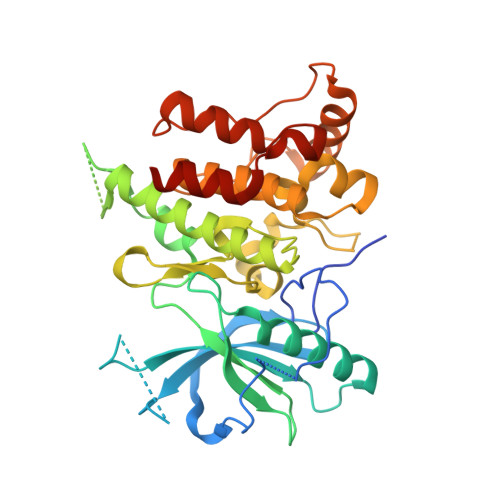Two-step release of kinase autoinhibition in discoidin domain receptor 1.
Sammon, D., Hohenester, E., Leitinger, B.(2020) Proc Natl Acad Sci U S A 117: 22051-22060
- PubMed: 32839343
- DOI: https://doi.org/10.1073/pnas.2007271117
- Primary Citation of Related Structures:
6Y23 - PubMed Abstract:
Discoidin domain receptor 1 (DDR1) is a collagen-activated receptor tyrosine kinase with important functions in organogenesis and tissue homeostasis. Aberrant DDR1 activity contributes to the progression of human diseases, including fibrosis and cancer. How DDR1 activity is regulated is poorly understood. We investigated the function of the long intracellular juxtamembrane (JM) region of human DDR1 and found that the kinase-proximal segment, JM4, is an important regulator of kinase activity. Crystal structure analysis revealed that JM4 forms a hairpin that penetrates the kinase active site, reinforcing autoinhibition by the activation loop. Using in vitro enzymology with soluble kinase constructs, we established that release from autoinhibition occurs in two distinct steps: rapid autophosphorylation of the JM4 tyrosines, Tyr569 and Tyr586, followed by slower autophosphorylation of activation loop tyrosines. Mutation of JM4 tyrosines abolished collagen-induced DDR1 activation in cells. The insights may be used to develop allosteric, DDR1-specific, kinase inhibitors.
Organizational Affiliation:
National Heart and Lung Institute, Imperial College London, SW7 2AZ London, United Kingdom.















